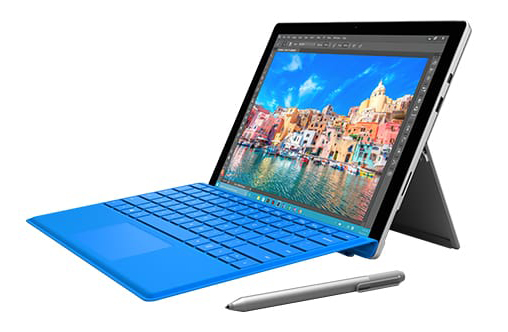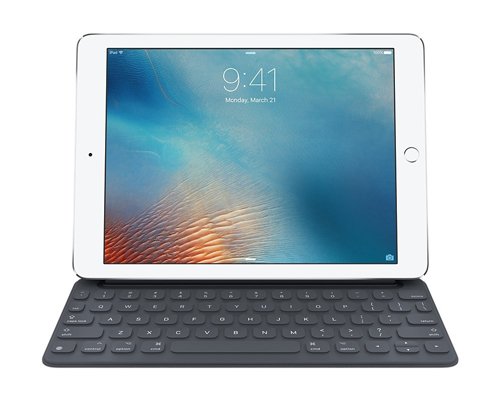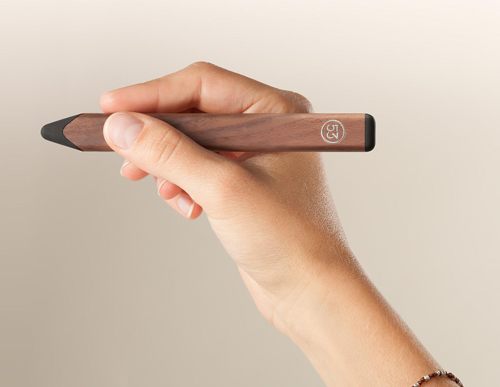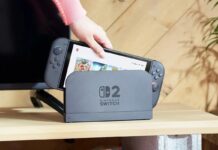 How useful is a tablet when it comes to getting things done on campus? That may depend on what your needs are, but as tablet utility and functionality continues to grow and improve, a case can be made that having the right one can be vital to your overall productivity at school. The question is: are you in need of a laptop replacement or a situational substitute?
How useful is a tablet when it comes to getting things done on campus? That may depend on what your needs are, but as tablet utility and functionality continues to grow and improve, a case can be made that having the right one can be vital to your overall productivity at school. The question is: are you in need of a laptop replacement or a situational substitute?
Some minimum requirements are necessary to determine what fits within this context. A screen size no smaller than 9.7-inches, with at least 2GB of RAM, and the ability to run Microsoft Office. Power, performance and flexibility to run apps that are as much about creating content as they are about consuming it.
Breaking this down, a “replacement” and “substitute” sound like synonyms, yet the nuance is different when it comes to tablets and laptops. The growth of 2-in-1 convertible and hybrid laptops with tablet functions are good examples of outright replacements, chiefly because they have larger displays, run desktop operating systems and come with keyboards.
Substitutes are more portable and flexible in that they may not completely replace the laptop and all its functions. The iPad Air or iPad Pro 9.7 are good examples, primarily because they can do plenty on their own, but are also perfectly suited to facilitating a computer, too.
Replacement devices
 There aren’t many tablets that fall under this category. Those that do include the iPad Pro 12.9, Microsoft Surface Pro 4 and Surface Book. Others that could also be added to that group are the HP x2 (12-inch), HP Elite x2, Dell XPS 9250, Acer Hawaii and Lenovo Miix 700.
There aren’t many tablets that fall under this category. Those that do include the iPad Pro 12.9, Microsoft Surface Pro 4 and Surface Book. Others that could also be added to that group are the HP x2 (12-inch), HP Elite x2, Dell XPS 9250, Acer Hawaii and Lenovo Miix 700.
The commonality between them all is that the same criteria noted earlier — screen size, power under the hood and software. One exception, of course, is the iPad Pro 12.9, which runs on iOS and not MacOS. All the others are Windows machines running full versions, and with the Surface models, particularly, plenty of spec variants to fit every need.
All were designed by their respective manufacturers to be laptop replacements. That’s a broad attempt, given how different users have different needs, so what may feel like a replacement for one student might fall short for another. Naturally, the main consideration is what you will need to do to get the job done with a path of least resistance.
For example, if you need desktop-only software for whatever program you’re enrolled in, an iPad won’t do it unless there’s a companion app that provides the same features and access. If you’re in a more mobile-focused course where mobile apps play a key role, an iPad Pro 12.9 might be the right mix of laptop-style productivity with all the trappings of a mobile OS.
Substitute devices
 That’s also where substitute tablets can come into play. Laptops are still great for creating content. Word processing, media editing, spreadsheets, presentations — they all feel perfectly suited because we’ve been making them on desktops and laptops for years.
That’s also where substitute tablets can come into play. Laptops are still great for creating content. Word processing, media editing, spreadsheets, presentations — they all feel perfectly suited because we’ve been making them on desktops and laptops for years.
Tablets, like the iPad Air 2, iPad Pro 9.7, Samsung Tab S2, HP x2 (10-inch) and Lenovo Yoga Tab 3 Pro are examples of tablets that we’ve come to know since 2010. A sizeable screen, easily held in one or two hands, with touch input all around, and weighing less and less each year. These have always been consumption devices — great for watching video, browsing, video chatting and playing games, but not always exceptional at creating something from scratch.
That is beginning to change. It’s already well known that a tablet can be a good support device, lending a helping hand as a second screen or doing something that makes more sense on a tablet than a laptop. This is also where Android comes in, since Google’s OS doesn’t have a laptop presence outside of Chromebooks, which are not really meant to be laptop replacements or substitutes. If you like Android, for whatever reason, substitute devices like the Tab S2 or Yoga Tab 3 Pro are your options, though Lenovo’s model might get the edge with the built-in pico projector.
More apps have come out in the last two years that are aimed at content creation, like those for photo or video editing, writing, drawing, audio recording and more. In other cases, the tablet app might be the first or last cog in the wheel for a production timetable. Start something on the tablet and finish it on the laptop, or vice versa.
Accessorizing either option
 The right accessory can change the use case for a laptop or tablet, much like an app. Pair the device with the right tool, and suddenly, something different seems possible. For instance, artistic students might prefer a substitute tablet because it’s light to carry and easy to draw on with a stylus. The flip side is that replacement laptops have larger displays and desktop software (again, except for the iPad Pro) that could be even more useful.
The right accessory can change the use case for a laptop or tablet, much like an app. Pair the device with the right tool, and suddenly, something different seems possible. For instance, artistic students might prefer a substitute tablet because it’s light to carry and easy to draw on with a stylus. The flip side is that replacement laptops have larger displays and desktop software (again, except for the iPad Pro) that could be even more useful.
Of course, a case, sleeve or bag is certainly worth it to protect your investment. Maybe a mouse? A keyboard? A mount or dock? A portable battery charger? External hard drive? Memory card? Headphones?
The sheer choice in how to accessorize a laptop or tablet is almost dizzying, no matter if it serves a functional or cosmetic purpose. Some of the accessories transcend the line between a laptop and tablet anyway, and can work in a variety of situations for either device type.
Making the best choice
There’s no real right or wrong here, only what’s best for you and your needs. Longevity and durability are important because you want the device to last and be productive, and to especially work with the tools and software critical to your studies. Do some homework beforehand to confirm compatibility, and it will save you time figuring it out later. The good news is that compatibility is far more universal now than it used to be, meaning an accessory or app may work fine no matter which device or brand you’re using.
It goes without saying, but it does bear repeating: the right device for you can only help make your school life easier.



